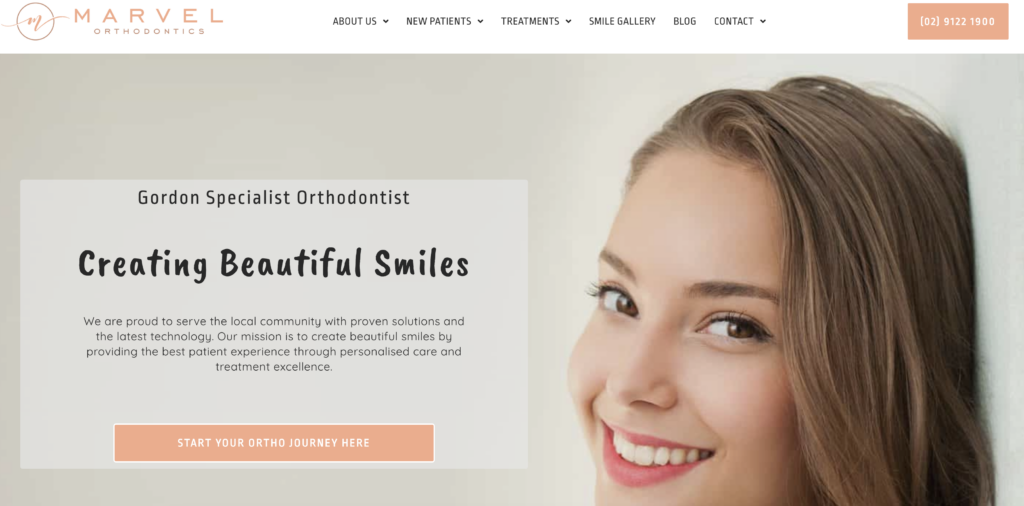Building a new website design for a dental practice is a critical step in establishing an online presence and attracting new patients. Here are several key considerations to keep in mind during the development process:
- User Experience (UX): Prioritize a seamless and intuitive user experience to ensure visitors can easily navigate the website and find the information they need. Clear navigation menus, prominent contact information, and a user-friendly appointment booking system are essential elements to include.
- Mobile Responsiveness: With the increasing use of smartphones and tablets, ensure that your website is fully optimized for mobile devices. A responsive design will adapt to different screen sizes, providing a consistent experience for users across all devices.
- Branding and Visual Identity: Reflect your practice’s branding and visual identity through the website design. Use consistent colours, fonts, and imagery that align with your practice’s values and target audience. A cohesive brand identity helps to build trust and recognition among visitors.
- Search Engine Optimisation (SEO): Implement SEO best practices to improve your website’s visibility in search engine results. This includes optimizing meta tags, incorporating relevant keywords, and creating high-quality, informative content that appeals to both users and search engines.
- Patient-Centric Content: Focus on creating content that addresses the needs and concerns of your target patients. Provide valuable information about your services, treatment options, and dental care tips to educate and engage visitors. Incorporate patient testimonials and before-and-after photos to showcase your expertise and build credibility.
- HIPAA Compliance: Ensure that your website is compliant with Health Insurance Portability and Accountability Act (HIPAA) regulations, especially if you collect patient information or offer online appointment scheduling. Implement secure encryption protocols and privacy policies to protect patient confidentiality.
- Accessibility: Make your dental website accessible to all users, including those with disabilities. Use accessible design principles such as descriptive alt text for images, keyboard navigation support, and clear headings to improve usability for everyone.

By considering these factors when building a new website design for your dental practice, you can create a professional, user-friendly online platform that effectively promotes your services and attracts new patients. Lastly, you will need to consider your dental marketing strategy when designing the website.



